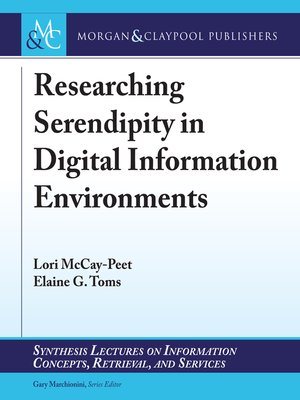Researching Serendipity in Digital Information Environments
ebook ∣ Synthesis Lectures on Information Concepts, Retrieval, and Services
By Lori McCay-Peet

Sign up to save your library
With an OverDrive account, you can save your favorite libraries for at-a-glance information about availability. Find out more about OverDrive accounts.
Find this title in Libby, the library reading app by OverDrive.



Search for a digital library with this title
Title found at these libraries:
| Loading... |
Chance, luck, and good fortune are the usual go-to descriptors of serendipity, a phenomenon aptly often coupled with famous anecdotes of accidental discoveries in engineering and science in modern history such as penicillin, Teflon, and Post-it notes. Serendipity, however, is evident in many fields of research, in organizations, in everyday life—and there is more to it than luck implies. While the phenomenon is strongly associated with in person interactions with people, places, and things, most attention of late has focused on its preservation and facilitation within digital information environments. Serendipity's association with unexpected, positive user experiences and outcomes has spurred an interest in understanding both how current digital information environments support serendipity and how novel approaches may be developed to facilitate it. Research has sought to understand serendipity, how it is manifested in people's personality traits and behaviors, how it may be facilitated in digital information environments such as mobile applications, and its impacts on an individual, an organizational, and a wider level. Because serendipity is expressed and understood in different ways in different contexts, multiple methods have been used to study the phenomenon and evaluate digital information environments that may support it. This volume brings together different disciplinary perspectives and examines the motivations for studying serendipity, the various ways in which serendipity has been approached in the research, methodological approaches to build theory, and how it may be facilitated. Finally, a roadmap for serendipity research is drawn by integrating key points from this volume to produce a framework for the examination of serendipity in digital information environments.






